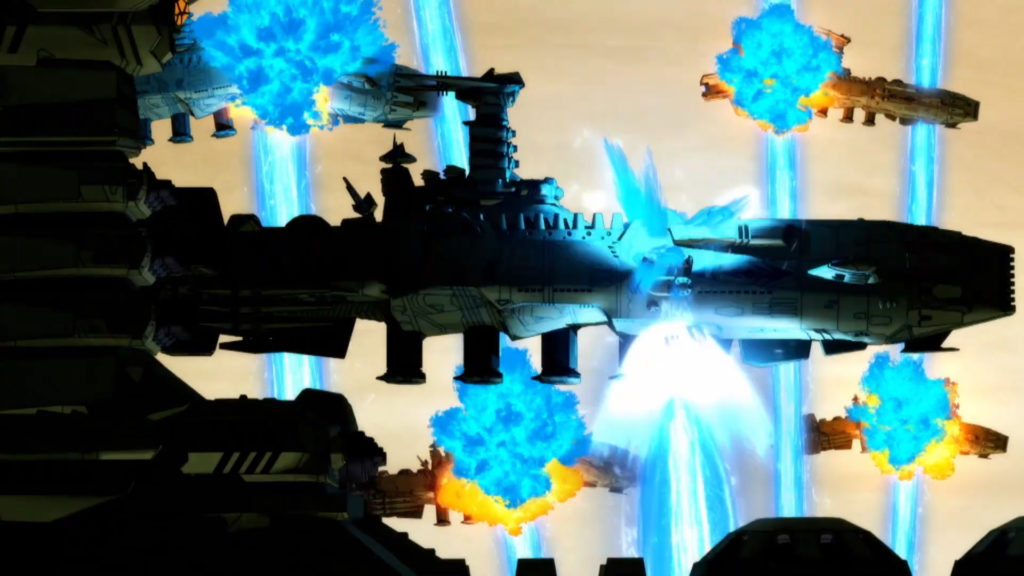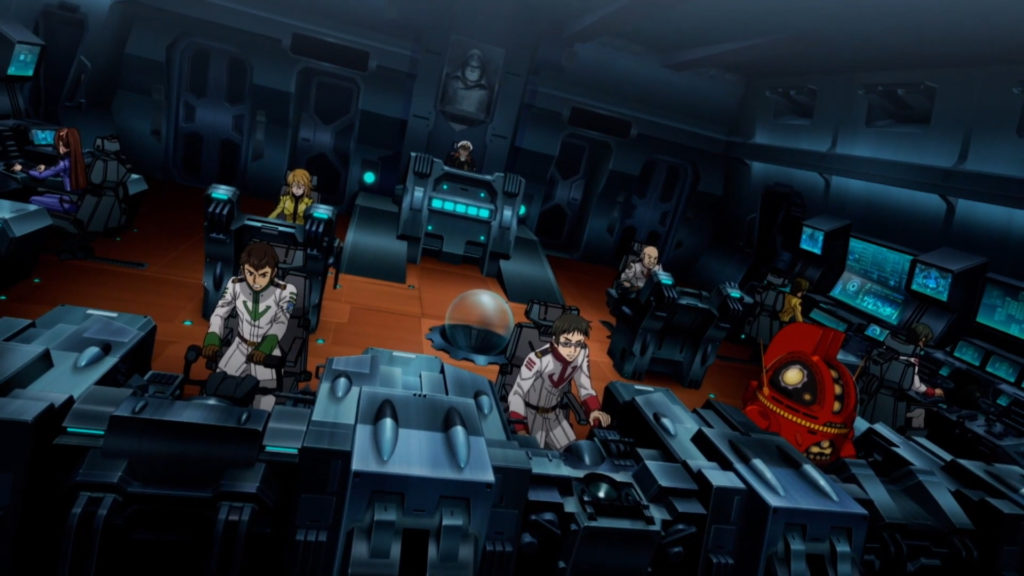Star Blazers: Space Battleship Yamato 2202 – Part 2 Review
Star Blazers: Space Battleship Yamato 2202 – Part 2 contains Episodes 14 to 26 of the series, or in other words, the second half of the show. When we last left our intrepid Space Battleship crew they were on the outskirts of the planet Telezart, looking to stop the Gatlantian fleet from breaking the barrier around the planet and allowing the race’s leader Emperor Zwordar to gain immeasurable power from the planet’s goddess Teressa. Kodai, the leader of the Yamato, had just gone against his natural instincts, as well as his old Captain’s promise, and used the “Wave Motion Gun” to take out a chunk of the Gatlantis fleet in order to achieve his goal. Within the first three episodes of this set the whole Telezart plot plays out, and it’s not just the Yamato crew that gets a shock.
During the course of the “Part 1” we saw a Gamillas agent known as Klaus Keyman eventually board the Yamato to offer a helping hand, thanks to the uneasy peace between the two old enemies, but in actuality he had an alternate plan that comes to a head when former Gamillas leader Dessler appears before them on Telezart. This leads to one of the more unexpected things about the sequel series and that’s the character development for Dessler. In 2199 he was a straightforward dictator with only the odd wrinkle here and there, but for whatever reason he was brought back at the start of this series and it’s now they choose to add some layers to his character. Odd, but fun to watch.

There were some great twists that I obviously won’t spoil, but it did add an extra layer to the story beyond Yamato vs. evil space Empire #2. Actually, by the end of this set, that’s a little unfair. Although far from deep and fleshed out, Gatlantis do get an interesting backstory, and Emperor Zwordar does have a small bit of character development by the end, though he does tend to fall into the “philosophical monologue about a topic he’s already monologed about” villain.
While it probably wouldn’t be a spoiler to talk about the fates of the some of the Yamato crew, particularly Kodai and his amnesiac fiancée Yuki Mori having romantic troubles at the start of the series, funnily enough, it doesn’t end in a quiet separation where they live separate lives, but I can say that I was satisfied with how the story ended. While I felt some characters were underserved and had pretty throw-away deaths, others had interesting wrinkles added to them. The melodrama can get a bit much towards the end, but at least it’s always bookended by great visuals and a stunning soundtrack by Akira Miyagawa and co.

That’s the main thing to take away from 2202: it at least gives you a spectacular ending, especially visually and audibly. The high production values are still evident, and even though some of the CG ships are a little wonky, some of the big climatic battle scenes will wow you with the Blu-ray running on a big screen. The final few episodes, which see Earth having to defend against Gatlantis’ main ship, a comet that used to be their home planet, are suitably epic in scope. Now as a reminder here: I haven’t seen the Leiji Matsumoto original series, so this may come off much worse if it changed the source material in some horrible way, we’ve all been there with remakes of things we love, but as I don’t have that perspective this time, I can say I enjoyed it with only a few deaths and twists coming off as poorly planned.
The opening theme is once again the lyric-less remix of the original Yamato theme simply titled “Space Battleship Yamato 2202” by the Osaka Shion Wind Orchestra. There are still several endings to talk about as well, “Crimson Red” by Yuya Hoshino continues on from the previous set for Episode 14, then for 15 to 18 is “Youranka” by Shino Arima with MayTree, while 19 to 25 has “Ooinaru Yamato” by Kouichi Yamadera. The final episode, 26, goes full circle and reuses the first ending: “Yamato yori Ai o Komete” (“Thank You Yamato”) by Kenji Sawada. The special features are a sitdown interview with the dub cast, dub cast commentary for Episode 23 and textless opening and endings.

Much like my review of Part 1 of this series, I’m left with a feeling that while 2202 wasn’t quite as good as 2199, both visually and in the story department, I wasn’t disappointed with the sequel. It’s still a high-budget space opera that keeps you interested and invested throughout its length, it’s just everything is a little worse or less original than the first time round.


